
Pike Drill
Pikemen needed to be stout and strong to use their pikes in battle. These soldiers were often men brought from the fields to fight for the King or Parliament and had to be taught how to use the pike, 'The queene of weapons'.
Drill was important, so that the pike-block (the group of pikemen positioned at the front of the arms in battle) became an effective defence for the musketeers, enabling the army to make an advance against the enemy.
The following pictures show a pikeman wearing a cabaset helmet, a breast and back plate over his tunic, with tassets. He carries a sword on a baldrick (a leather strap) slung from the right shoulder and wears breeches that tie at the knee, stockings and latchet shoes. Oddly, the artist shows this soldier wearing over-socks in some of the pictures. These are thick wool socks that normally hang around the ankles, but can be pulled up to protect the legs from nettles etc.
Drill consists of a number of commands each of which requires the pikeman to take up a specific posture.
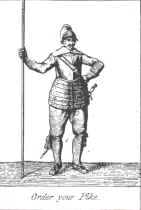 ORDER
YOUR PIKE
ORDER
YOUR PIKE
This is the normal posture of the Pikeman. He stands holding his pike with the right hand about shoulder height. The tail of the pike is just to the right of his right foot, which is positioned slightly ahead of the left. His left hand rests on his hip, or it may rest on the pommel of his sword. The feet remain in the same position for this command
ADVANCE YOUR PIKE
This is the next command. It takes three moves to complete, to three drum beats. On the first beat, the pike is raised from the ground by the right hand maintaining its grip. The left hand moves from the hip to grip the pike halfway between the right hand position and the tail of the pike.
On the second beat, the right hand leaves the 'order position and is dropped to cup the tail of the pike.
On the third beat, the right arm secures the pike into the shoulder, keeping the pike vertical as it is cupped in the right hand. Also, the left hand returns to the hip, or sword as in the 'order'.
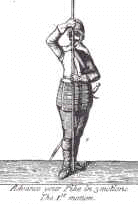
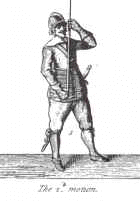
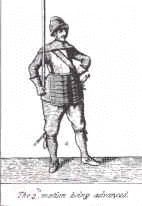
The pikeman may now be given the order to march in this posture.
READY TO MARCH
This command instructs the soldiers to stand with their feet together.
QUICK MARCH
At this command the soldiers march off, on the left foot.
To return to the 'Order' from the 'advance', the command 'Order your pike' will be brought about in three moves, to three drum-beats, thus; On the first beat, the left hand will grip the pike, bringing it away from the shoulder. On the second beat, the right hand will leave the tail of the pike and reach a position on the pike about head height. On the third beat, the left hand resumes the position on the hip, or sword and the right hand positions the pike outside the right foot, the right hand holding the pike about shoulder height again.
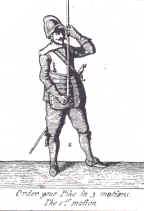
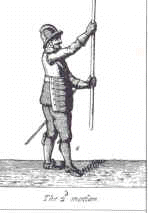
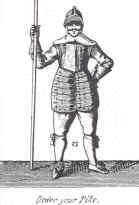
SHOULDER YOUR PIKE
This command is usually given on the march, when the pike is already being carried at the 'advance', which can soon become tiring. At the 'shoulder', the pike can be carried for many miles.
These pictures show the command executed in three moves from the 'order'. On the first beat, the pike is lifted by the right hand and tilted back at the same time, the left hand takes a grip just below the right. On the second beat, the right hand finds the balance of the pike where it will rest on the shoulder. On the third beat, the right hand finds a lower grip to steady the pike as the left hand returns to the hip, or sword. The pike is then borne on the shoulder, carried at an angle approximately 45 degrees.
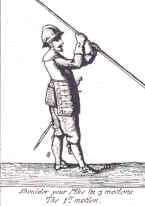
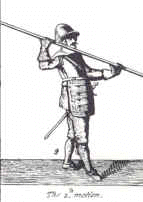
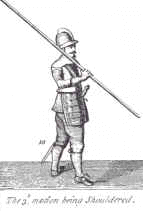
PORT YOUR PIKE
This command should follow the 'advance' command. It is carried out on two drum beats. On the first beat, the left hand grasps the pike near the right shoulder. On the second beat, the left foot steps forward, bending slightly at the knee, as the left hand elevates the pike to about 45 degrees. The right hand maintains the cupping of the tail of the pike, but holds it firmly against the inner thigh to counter-balance the weight of the pike and to withstand any forces put upon it. The drawing is incorrect on this detail.
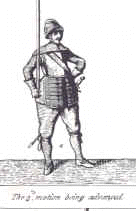
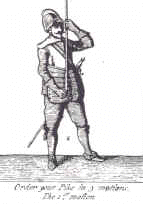
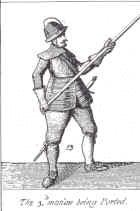
CHARGE YOUR PIKE
This command follows the 'port' and is completed on one drum beat. The right hand lifts the tail of the pike until the arm is extended to the pikeman's rear and cover the shaft of the pike. The left hand is drawn under the chin gripping the pike firmly. The left leg is bent some more as the right leg is extended rearwards.The pikeman should then be ready to withstand forces on the pike.
Longer pikes to repel cavalry would be handled differently. On this command, or on the alternative "CHARGE FOR HORSE", the tail of the pike is held firmly into the ground with the right foot and the left hand steadies the pike with the elbow on the left knee.
The right hand is then free to draw the sword ready for the ensuing combat. The point of the sword would be held to the ground outside of the left foot. to save time trying to draw it during a charge.
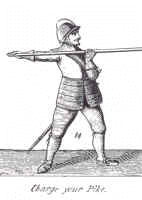
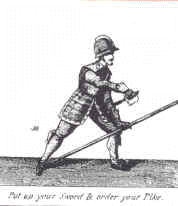
The first picture above is the normal posture for the pikemen in a 'pike-block' pushing against the opposing forces. He could soon be overrun by cavalry. The second picture shows a pikeman ready to receive a charge of horse. The horse or rider would be impaled on the pike, so the sword is drawn ready for hand-to-hand combat.
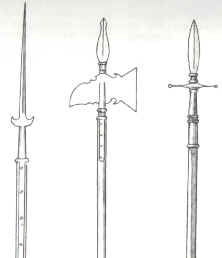 This
illustration shows a Pike, a Halberd and a Spontoon. The langettes
can clearly be seen on the first two. They are riveted together through
the shaft.
This
illustration shows a Pike, a Halberd and a Spontoon. The langettes
can clearly be seen on the first two. They are riveted together through
the shaft.
By the 18th century these weapons became obsolete with the advent of bayonets attached to muskets, although some remained in use as a mark of office for a further century.